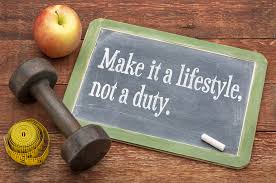Did you attempt a diet or workout plan to get “into shape” this summer? It’s now July, how did that work out for you? If you are like many, diets or quick-fix workout plans don’t work – or if they do, results don’t last very long. Most people lose motivation quickly and can’t adhere to the strict requirements. The most effective way to get lasting results is to make changes in your lifestyle. Here are some tips as to how you can successfully implement a healthy lifestyle:
- Find your motivation. Whether it is a trip to the beach in a few months, impressing your significant other (or making your ex jealous) or completing that race you entered, finding one or more motivating factors is key to implementing lifestyle changes.
- Create Accountability. Involve your friends and family, or consider hiring a trainer. Being accountable will help you stay on track.
- Be Invested. How many times have you heard people say, “I only pay $20 a month for a gym so if I go once a month I will break even?” You have probably seen advertisements for diet programs that cost thousands of dollars. A large part of the success is the financial investment people make and their adherence because of such investment. You don’t have to break the bank, but having some sort of investment will help you stick to your plan.
- Don’t diet. Create meal plans that fit your taste and are practical and based on your lifestyle. Avoiding the foods we shouldn’t eat goes along way. It may not be practical for you to access the latest and greatest health food trends, but putting together a plan of foods to avoid, such as fried foods, dessert, soda and white bread, is something everyone can do.
- Plan around your workout. Most people squeeze a workout into their schedules. Pick days and times that work best for you, and commit to your workout times. You can then plan the rest of your schedule around those times.
- Create detailed goals that are achievable. Specificity has been proved to increase the likelihood of success. Set specific goals for yourself and also consider getting help in setting your goals. Also make sure you set goals that are achievable in the short term. You can continue to build on your goals, but feeling accomplishment will increase your chances of success. So if you want to lose 50 lbs, consider starting with your first 10 pounds within three months.
- Go slow and build. Slow and steady may not get you the fastest results but is the best way to incorporate change into your lifestyle. If you don’t exercise currently, don’t attempt to go four times a week. Aim for twice a week, and make incremental changes. Try something for at least 30 days, or until it becomes habit, before raising your targets.










